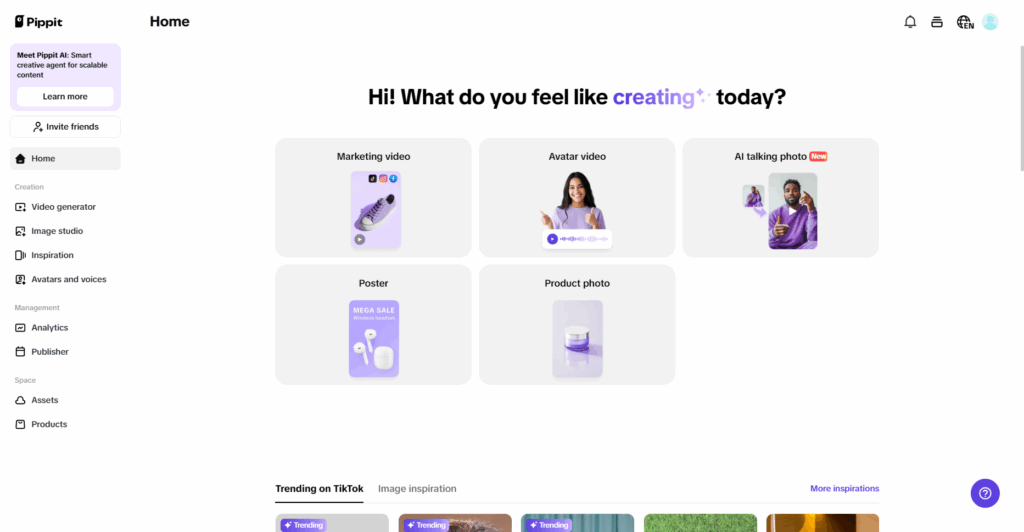
Artificial Intelligence (AI) refers to the simulation of human intelligence by machines, enabling them to perform tasks such as learning, reasoning, and decision-making. It encompasses technologies like machine learning, natural language processing, and neural networks, which allow systems to analyze data, recognize patterns, and improve over time. Businesses are increasingly integrating AI to streamline operations, enhance customer experiences, and drive innovation. From automating routine tasks to generating personalized marketing content using tools like a free AI video generator, AI is transforming industries. This revolution promises to boost efficiency, improve decision-making, and unlock unprecedented opportunities for growth.
Enhancing Efficiency And Productivity
Artificial Intelligence (AI) is significantly improving efficiency and productivity in various business operations. By automating routine tasks, optimizing supply chain management, and enhancing manufacturing processes, organizations can streamline their workflows, minimize errors, and reduce costs. Below are key areas where AI is making a substantial impact:
Automation Of Routine Tasks
AI-powered automation is transforming how businesses handle repetitive processes, enabling them to focus on strategic goals. For instance, AI-driven tools can automate tasks like data entry, invoice processing, and customer service inquiries. Chatbots provide instant responses to customer queries, while robotic process automation (RPA) handles high-volume tasks with precision. This reduces human error, accelerates processing times, and significantly cuts operational costs. By automating these routine processes, businesses achieve higher efficiency and allocate resources to more value-driven activities.
Optimizing Supply Chain Management
AI is revolutionizing supply chain operations by enhancing forecasting accuracy and inventory management. Predictive analytics tools analyze historical data, market trends, and external factors like weather to anticipate demand fluctuations. This minimizes overstocking or stockouts, reducing waste and carrying costs. Additionally, AI optimizes logistics by identifying the most efficient delivery routes based on real-time traffic, fuel prices, and deadlines. These advancements lead to faster deliveries, lower transportation expenses, and improved customer satisfaction. AI also strengthens supply chain resilience by predicting disruptions and suggesting alternative suppliers or shipping routes.
Improving Manufacturing Processes
In manufacturing, AI enhances quality control by detecting defects through advanced image recognition systems. Predictive maintenance powered by AI identifies potential equipment failures before they occur, reducing downtime and repair costs. For example, sensors in machinery collect real-time data analyzed by AI to flag anomalies early. This ensures consistent production quality while maximizing operational efficiency. By integrating AI into manufacturing workflows, businesses can achieve higher productivity levels and maintain a competitive edge.

Improving Decision-Making
AI is also instrumental in enhancing decision-making processes within organizations. By analyzing vast amounts of data for valuable insights, personalizing customer experiences, and managing risks effectively, businesses can make informed choices that drive success. Here are the key aspects of how AI aids in decision-making:
Data Analysis And Insights
AI algorithms excel at processing vast datasets to uncover actionable insights. Businesses use these insights to identify market trends, understand customer behavior, and assess risks more effectively. For example, retail companies leverage AI to analyze purchasing patterns and optimize product offerings. Financial institutions use it for risk assessment in investment decisions. These capabilities enable organizations to make informed strategic decisions that enhance competitiveness and profitability.
Personalized Customer Experiences
AI enables businesses to deliver highly personalized customer experiences through tailored product recommendations and targeted marketing campaigns. Tools like recommendation engines analyze user preferences to suggest relevant products or services in real-time. Chatbots equipped with natural language processing provide customized support 24/7, improving customer satisfaction and loyalty. Personalized email campaigns driven by AI also enhance engagement rates, ultimately boosting sales while utilizing tools like text to video AI for creating engaging content.

Risk Management And Fraud Detection
AI is a powerful tool for identifying risks and preventing fraud across industries. In financial services, AI monitors transactions for unusual patterns indicative of fraud. Similarly, cybersecurity systems utilize AI to detect potential threats in real-time by analyzing network activity for anomalies. These applications reduce financial losses while ensuring compliance with regulatory standards. By proactively addressing risks, businesses enhance their operational security and build trust with stakeholders.
Creating New Opportunities For Innovation And Growth
The integration of AI is paving the way for new opportunities in innovation and growth across various sectors. It facilitates the development of new products and services while enhancing research processes and transforming traditional business models into more scalable options. Here’s how AI contributes to innovation:
Development Of New Products And Services
AI fosters innovation by enabling the development of groundbreaking products and services. For example, pharmaceutical companies use AI for drug discovery by analyzing molecular data to identify potential candidates faster than traditional methods. Similarly, advancements like autonomous vehicles and smart home devices are powered by AI technologies. These innovations open new revenue streams while positioning businesses as industry leaders.
Enhancing Research And Development (R&D)
AI accelerates R&D processes by analyzing complex datasets quickly and accurately. In scientific research, AI identifies patterns in experimental data that might otherwise go unnoticed. For instance, researchers use AI to study climate data for environmental solutions or analyze genetic information for medical breakthroughs. This leads to faster discoveries and improved innovation across industries.
Transforming Business Models
AI is reshaping traditional business models by enabling new revenue opportunities such as subscription-based services or AI-as-a-service platforms. Data-driven consulting powered by AI provides organizations with predictive insights that drive better decision-making. These models offer scalability and adaptability in dynamic markets while creating sustainable growth opportunities.

Challenges and Considerations
Despite its numerous benefits, the adoption of AI comes with challenges that businesses must navigate carefully. Addressing ethical concerns around bias, ensuring data privacy security measures are in place, and managing workforce transformations are critical considerations for the successful implementation of AI technologies:
- Ethical concerns and bias: AI systems can inadvertently perpetuate biases present in their training data or decision-making processes, leading to unfair outcomes in areas like hiring or lending decisions. Ensuring fairness requires implementing ethical guidelines during development and using diverse datasets for training models. Transparency in how algorithms function is also critical for building trust with users.
- Data privacy and security: The vast amount of data required for AI systems raises concerns about privacy breaches and misuse of sensitive information. Businesses must comply with regulations such as GDPR or CCPA while implementing robust cybersecurity measures like encryption and anonymization techniques to protect user data.
- Workforce transformation: As automation replaces certain job functions, workers may face displacement or the need for reskilling to adapt to new roles requiring technical expertise in managing AI systems. Companies can address this challenge by investing in training programs that equip employees with skills relevant to emerging technologies while fostering a culture of continuous learning.
Steps To Create Business Videos In Pippit
Step 1: Add A Product Link Or Upload Media
Begin by signing up for a free Pippit account and accessing its main interface. Navigate to the “Video Generator” panel, where you can paste a product link or upload media such as images and videos. The AI automatically extracts essential product details like names and features, while the “Auto Enhance” feature optimizes visuals for better quality. Use the “Advanced Settings” option to customize scripts, avatars, voiceovers, aspect ratios, and more. Additionally, incorporate AI-suggested stock assets to enrich your video content before clicking “Confirm” and then “Generate.”

Step 2: Create Ai Videos In Clicks
Once your video is generated, explore theme-based categories such as product highlights or TikTok trends. Hover over a template and select “Quick Edit” for simple customization. In the editing panel, adjust scripts, avatars, voice settings, text, and font styles to suit your preferences. For advanced editing needs, click “Edit More” to modify the aspect ratio, add elements, insert stock images, include background music, and fine-tune playback settings for a polished final result.

Step 3: Export Your Video
After completing your edits and finalizing the AI video, click the “Export” button located in the top right corner. You can choose to “Publish” directly to social media platforms or “Download” the video to your computer. When downloading, select resolution, quality settings, frame rate, and format to ensure optimal compatibility across various platforms.

Conclusion
Artificial intelligence is transforming business operations by enhancing efficiency, improving decision-making, and fostering innovation. Tools like Pippit exemplify this shift by simplifying video production with AI-powered features, enabling businesses to create high-quality content effortlessly. By leveraging such technologies, organizations can streamline workflows, reduce costs, and maintain a competitive edge in today’s fast-paced digital landscape. Pippit is a vital resource for businesses looking to elevate their content strategies and drive growth.

